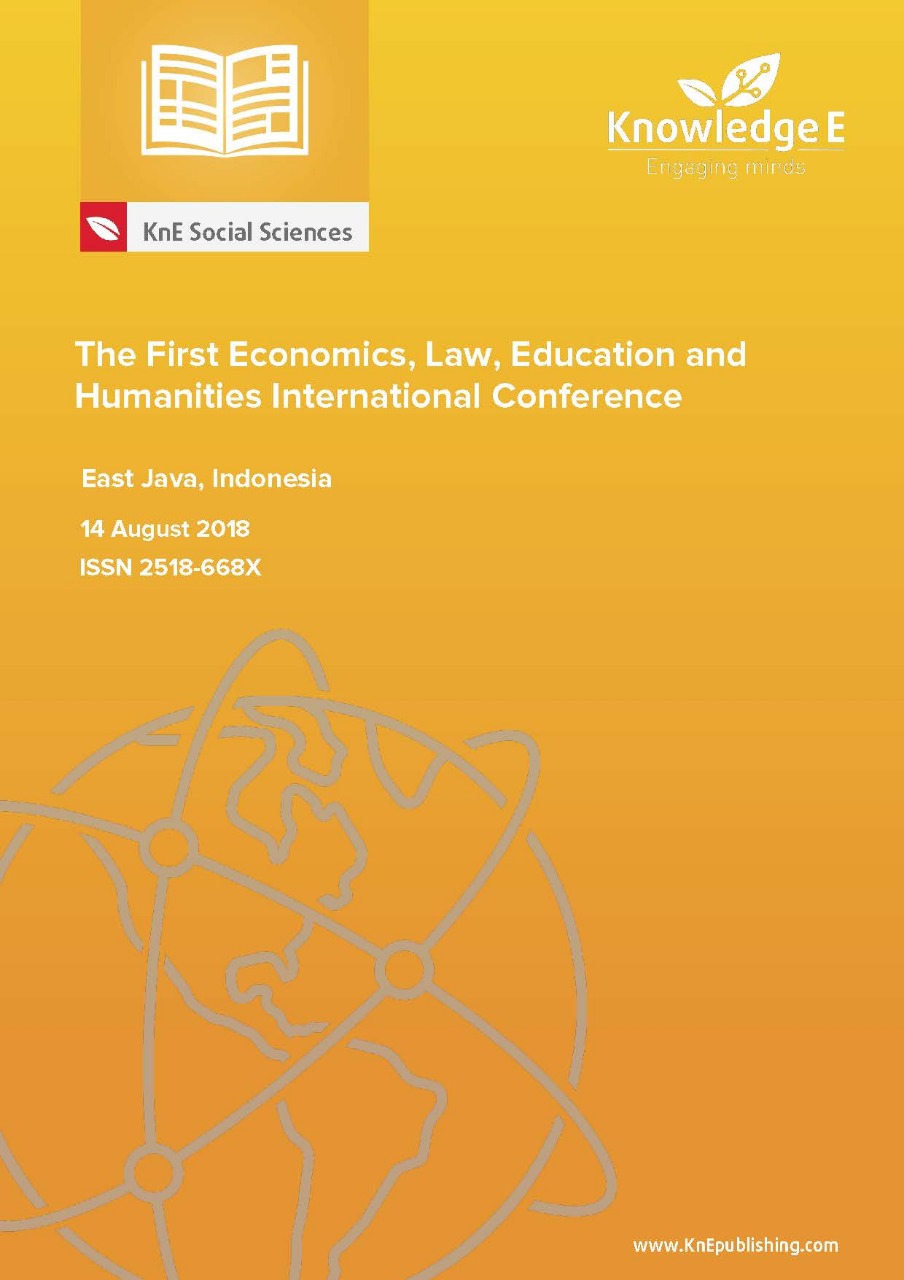Effect of Diversification of Business and Economic Value on Poverty in Batubara Regency
DOI:
https://doi.org/10.18502/kss.v3i14.4325Abstract
The purpose of the research to find the most consistent factor of economic diversification in increasing economic value and reduce poverty in Batubara Regency. How fishing households performs and having better in livelihood strategy. The 260 sample of fishing household in Batubara Regency were used to investigate the research, and Structural Equation Modeling (SEM) model is used to estimate interaction related to fishing and non-fishing activities to economic value and poverty. Diversification on fishing is significant difference compared to non-fishing diversification, these results indicate that coastal communities are still heavily dependent on the businesses involved in fishing or coastal related activities. Wives work are more significantly than premises wife does not work in maintaining household which are not deeply falling down to poverty situation. Wives are still needed to increase husband’s income. We recommend that the wife is looking for alternatives beyond fishing activities. Wife does not work and child work fishing more significant compared with his wife is not working and child work non fishing. These results indicate that the work of children who performed very profitable if working outside of non fishing activities. Networking is insignificant compared to networking poverty. These results indicate that the networking activities undertaken by coastal communities are not very effective in increasing income or reducing poverty. Networking should be done with empowerment between fishermen and non-fishermen who support each other.
Keywords: diversification of business, economic value, networking and poverty
References
Ministry of Marine Affairs and Fisheries. (2015)
Fauzi, M. R (2015). Policy Paper: Key Thoughts for a Draft Rule on Customary Villages. Publisher: Forum for Village Renewal Development (FPPD). Yogyakarta
Chambers. (2013). Village Development Start from Backward.Jakarta: LP3ES
Smith, I.R. (1987). Increasing Fishery Income on Researched Resources (Discuss Indonesia) in Marahuddin and Smith (editors). Fishery Economics. Yayasan OborGramedia. Jakarta.
Kusnadi. (2002). Social Conflict of Fishermen, Poverty and Fishery Resource Seizure. LKIS. Yogyakarta
Elfindri. (2002). Patron-Client Economics: Micro Phenomena of Fisherman’s Household and Macro Policy. Padang: Andalas University Press
Grootaert, C, Van Bastelaer. (2002). Understanding and Measuring Social Capital: A Multi-Disciplinary Tool for Practitioners. Washington: World Bank
Lawang, Robert. (2005). Book of Introduction to Sociology. Jakarta: Open University
Suryawati. (2004). Theory of Micro Economics. UPP. AMP YKPN. Yogyakarta: Jarnasy
Baharsyah, S. (1990). Fixed Business Opportunities in the Agricultural Sector.Prism No.2 p.86 LP3S
Suryana, A. (1995). Agricultural Diversification in the Process of Accelerating the pace of National Development. Pustaka Sinar Harapan. Jakarta
Zen, Noerdin Noehoen. (1986). Fisherman Income Distribution Analysis in terms of Factor Contribution. Thesis Master of Science. Faculty of Post Graduate Institut Pertanian Bogor.
Syarif et al. (1993). Economic Empowerment of the People. PT Pustaka Quantum. Jakarta.
Kusmawati. (2005). Effect of Business Diversification, Leverage, and Company Size on Profitabitas of Open Industry Companies in Indonesia Stock Exchange ”. Journal of Accounting Research AKsioma, 4 (2), pp.100-126
Slamet, M, and Angsari. (1969). Animal Husbandry of the Directorate General of Animal Husbandry of the Ministry of Agriculture. Jakarta
Samsudin U. (1977). Fundamentals of Counseling and Modernization of Agriculture. Bina Cipta. Bandung.
Devandra C, and M Burns. (1994). Goat production in the Tropics. Translated I.D.K.H Son. Bandung ITB Publisher
Suryanto, B. (1996). Analysis of Profitability of Livestock Farming Business Sheep. Media Journal 22 (4): 6-11
Knipscheer, H.C. A.J. De Boer, M Sabrani, T.O Soedjana. (1987). The Role of Goat and Sheep Economy in Indonesia, A Case Study of West Java in P.S. Hardjosworo, J.M.Levine (Editor) Livestock Development in Indonesia (Model System Role) Pg. 112- 134. Yayasan Obor Indonesia. Jakarta.
Levina J.M. (1987). Establishing a Model of Animal Husbandry System in the Tropics with Specific References to Circumstances in Indonesia in P.S. Hardjosworo, J.M. Levina (editor) of Livestock Development in Indonesia (Model System and Its Role). Yayasan Obor Indonesia. Jakarta
Prayitno H and L. Arsyad. (1987). Village Farmers and Poverty. Agency Publisher Faculty of Economics UGM Yogyakarta
Mosher, A.T. (1977). Mobilizing and Building Agriculture. CV. Yasaguna. Jakarta.
Adiwilaga, A. (1996). Farming. Bandung Alumni Publisher.
Legowo, A.B.E, Prasetyo and Rianto. (2002). Revenue and Profitability Profitability of Ettawa crossbreed Goat Farming to Farmer Group Members in Purworedjo District. Journal of Tropical Farming 27 (4) 177-185
Anas Tain. (2010). Causes of poverty of fishermen households in the East Java More Capture Areas. Journal. Faculty of Animal Husbandry UMM.

